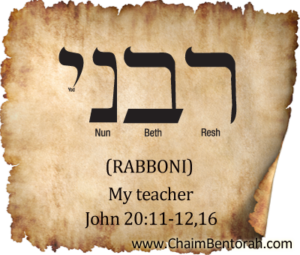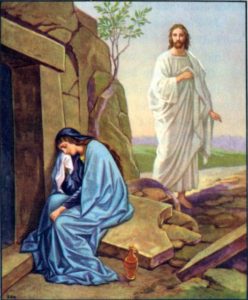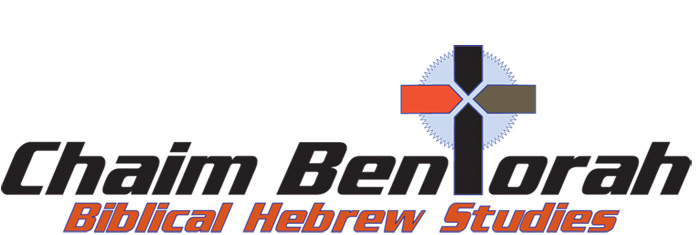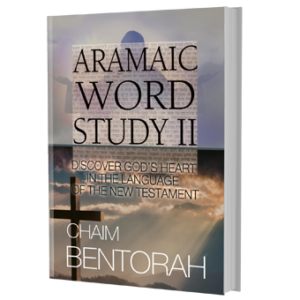ARAMAIC WORD STUDY – RABBONI – MY TEACHER – רבני Resh Beth Nun Yod
John 20:11-12,16: “But Mary stood without at the sepulcher weeping: and as she wept, she stooped down, [and looked] into the sepulcher,12 And seeth two angels in white sitting, the one at the head, and the other at the feet, where the body of Jesus had lain. (16) Jesus saith unto her, Mary. She turned herself, and saith unto him, Rabboni; which is to say, Master.
 It seems much of Easter if focused on the death of Jesus and his resurrection is almost like an afterthought. Even today the symbol of Christianity is a cross, a device for killing someone. The real symbol of Christianity is the empty tomb. You don’t hear this too much in the Easter story but Sunday is the day He arose, not died. That is why Christian celebrates the Sabbath on Sunday for that is the day of our redemption. The Old Testament Sabbath is the day Jesus rested in the tomb. Let’s examine this first day of our redemption.
It seems much of Easter if focused on the death of Jesus and his resurrection is almost like an afterthought. Even today the symbol of Christianity is a cross, a device for killing someone. The real symbol of Christianity is the empty tomb. You don’t hear this too much in the Easter story but Sunday is the day He arose, not died. That is why Christian celebrates the Sabbath on Sunday for that is the day of our redemption. The Old Testament Sabbath is the day Jesus rested in the tomb. Let’s examine this first day of our redemption.
First, why did Mary go to the sepulcher or tomb on Sunday morning? We assume it was to complete the burial process of anointing the body with spices or oils. This seems a bit far fetched as we are talking over 36 hours after the death and thus it is not kosher to touch a dead body after that time. You would become ceremonially unclean to perform a religious ceremony? Generally, the answer would be that there would be a period of grace since Jesus died just before the Sabbath and they did not have time to prepare the body properly and they could not do it on the Sabbath so a little grace time was given to finish the burial process which is why Mary arrived at dawn. That is a possible explanation but I do not find anything in the Talmud granting such grace periods although I am not an expert on the Talmud. Besides, the whole reason for bringing the body off the cross just before the Sabbath was to allow enough time to prepare the body. They would not have entombed the body without proper burial procedures.
I believe a more accurate reason would be in the Semitic culture itself, which plays into the passages of John 20. It was an old Semitic custom to visit the graves of the dead on the third day after their passing to say a final farewell to the soul of the departed. It was believed that the soul hovered over the body for three days before departing. It was believed that many times the dead would return to life briefly on the third day for a short time until he fully realizes he is dead. This is a chance for a final farewell. Let’s face it, they did not have modern medicine and the definition of death was much different than today. They would yell into a person’s ear and if there was no response they were dead. It would not be unusual for a person to be just in a state of unconsciousness and would awaken in a couple of days. Hence they gave it three days to revive which is why they were placed in an open tomb rather than covered with dirt. After three days if they did not revive, they were considered dead or they revived long enough to realize they were dead. Even today there are many stories of someone who is totally unconscious awakening for a brief period of alertness before dying.
Would you like Chaim Bentorah as your personal Hebrew teacher?
|
|
Jesus did say he would arise after the third day so it is likely Mary and the others went to the tomb with the hope of the last farewell according to Semitic tradition. Also, according to this tradition, they would anoint (not touch) the body with oils and then burn some incense and wait for the soul to appear and either enter the body or in some way give a last farewell. The disciples never really expected Him to actually get up and walk out.
So why did God allow them to follow such a pagan tradition? I mean why did Jesus not just appear to the disciples at Galilee? I believe it was to show them something very important. Note when Mary looked into the tomb what did she see? Two angels, one at the head and the other at the feet of where Jesus was laid. Two angels at each end of a slab of stone? What does that remind you of? Does it take a dusty old college professor to remind you of that picture? The mercy seat on the Ark of the Covenant where the blood was sprinkled in atonement for sin. You don’t need me to explain the rest.
Perhaps Mary did because her first words to Jesus was not “My Lord!” or “My God.” It was Rabboni. Some texts say it is Hebrew but the word Hebrew in the New Testament was often interchanged with the word Aramaic. It is really an Aramaic word for ‘My Teacher.” Either Mary instantly saw the connection between the empty tomb and the Ark of the Covenant or she was asking Jesus to explain it to her, I don’t know which but one thing I am sure of, Jesus gave us a perfect picture of His role in the redemption of our sins in that empty tomb.

Hi there! Thank you for reading this Daily Word Study. Can I ask a favor? Share this Daily Word Study with your friends on Facebook and Twitter by clicking one of the icons below.
Thanks & Blessings, it means a lot to me!







Blessed is he that has eyes to see and ears to hear. I am so grateful for The Holy Spirit leading me to study under you. My vision is improving daily. Hallelujah
This is so helpful! It takes my mind to try to understand more about what day he actually died for he spent three full days (3 days and 3 nights in hell), and I understand the Hebrew calendar is very different than our modern day calendar, but the prophesy was 3 days and 3 nights in the heart of the earth (Sheol). Can you please provide your understanding of the timing of his death and resurrection because I can’t help but see the contradiction or (poor translation most likely). Thank you!
What is “my teacher” in Hebrew?
What’s great about Bible study is that it gives more than the written word in the Bible does. Thank you for unpacking the burial culture. Great. The tomb is empty. That for us is victory. Blessings.